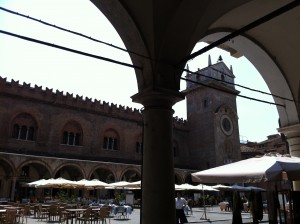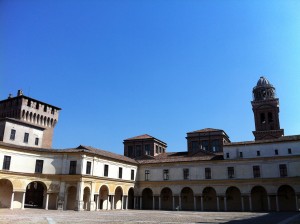Mantua, or Mantova in its native form, is the shy, but beautiful neighbour to popular cities like Parma, Verona and Venice. Considered to be the finest city in Lombardy, Mantua is an important cultural gateway to a rich Renaissance heritage.
Perched gloriously on the banks of the River Mincio, the city is further surrounded by three beautiful man-made lakes that just add to the attraction of this glorious Italian city. Listed as a UNESCO World Heritage Site in 2008, Mantua is a living testament to the powerful Gonzaga family who ruled the city and surrounding towns during the Renaissance.
With breath taking architecture, religious sites, palaces, summer houses, villas and even an 11th century Rotunda, visitors have an up close and personal chance to get an idea what life must have been like under the rule of the Gonzaga family during the Renaissance. Much of the extension of the city is owed to the Gonzaga family who had a pinnacle role to play.
The family were pioneers in the conservation and promotion of the arts and culture, and the city played host to many a famous artist, composer and musician in its heyday, and Mantua is indelibly linked with the history of opera. The family’s opulent home, the Palazzo Ducale, is an extravagant estate, boasting more than 500 rooms with a massive complex of gardens, courtyards and gardens, and complete with frescoes painted by Mantega in 1474.
Right in the heart of the city brings you to the piazzas, where some of the most beautiful buildings can be found. Four impressive squares converge to create the city centre, with Piazza Sordello possibly the most majestic. Each piazza seems to have at least one most-magnificent building, so lovers of architecture will be awed by the examples of Palazzo Vescovile, Torre della Gabia (Cage Tower), the Tazi Nuvolari Museum in the Palazzo del Podesta, Rotunda di San Lorenzo, and the clock tower in the Palazzo della Ragione. Of course, no Italian city worth its salt is without a stunner in the church department, and in Mantua the finest examples are the Duomo and the Basilica Sant’Andrea.
Winding around the squares are cobbled streets filled with bustling sidewalk cafes and excellent restaurants. This is where visitors have a chance to experience the other big attraction of Mantua – the food and wine.
Northern Italian cuisine is all in a class of its own, and Lombardy is known for a region that is famous for its typical country dishes, like risotto and freshly made filled pasta. A favourite on the menu is tortelli pasta stuffed with pumpkin topped with the special local delicacy – shaved white truffles. Washed down with a mouthful of the region’s most popular, the Lambrusco Mantovano DOC, which comes from the local vineyards just to the north of the city, it makes the perfect taste of Mantua and Lombardy.
The city’s River Mincio provides other popular local dishes – shrimps and freshwater pike but, the predominant factor here is that all Mantuan cuisine is prepared with serious care, and only the freshest, seasonal and simple ingredients are used.
Family run restaurants seeped in traditions can be found everywhere, from the humble bakery to the elaborate world class restaurants. The atmosphere and the friendly charisma pervade all eateries in Mantua, and spills onto the sidewalk tables and chairs. Families that run restaurants do so with a serious passion for food, and the preservation of local culinary history, often bringing old, traditional recipes back to life.
So if you are visiting the city, even for just a few days, put on those walking shoes or pick up a bicycle and cruise the cobbled streets like a local, with surroundings that will whisk you right back into time.


